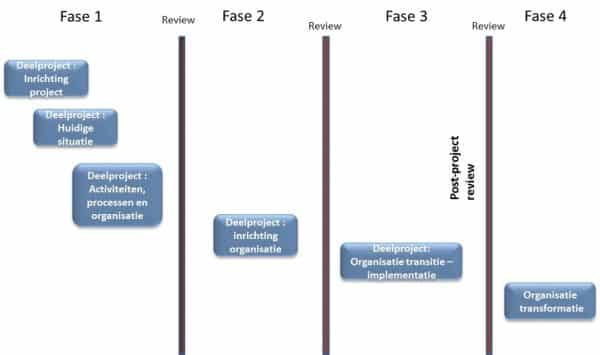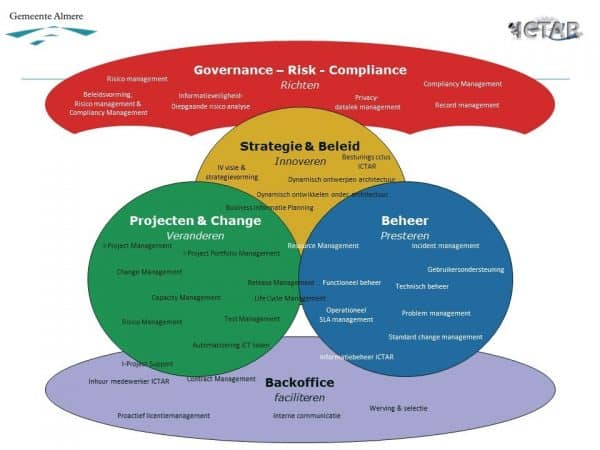Municipality of Almere: Setting up and revising processes ICTAR
ICTAR is the new IV organization of the Municipality of Almere. Symbol advised and supported ICTAR in redesigning and restructuring its internal processes. “The organization has made a huge step from thinking and working in functions and department to collaborating and ‘process thinking,'” said Jeroen Bos, Symbol’s consultant.
This new organization was created from Regie ICT and the 3 application management teams (ERP, IRO and I&P). The name “ICTAR” is derived from the “old” designations ICT, Application Management & Governance. Ultimately responsible is the CIO. Within ICTAR, the processes needed to be redesigned and optimized.
Partly as a result of the transition from one IV platform provider to another, the reports and recommendations of the Court of Auditors and PWC, a baseline measurement was performed within the Municipality of Almere. This baseline assessment assessed the IT organization in a number of aspects: Project management and project portfolio management, IT infrastructure, IT architecture, cost and management of business applications. In addition, an IV vision was created for the future IV organization within the Municipality of Almere.
From the above, a phase plan for the development of the IV organization has been established

Purpose of the project
The purpose of the project was to set up the new Information Services organization of the Municipality of Almere. This new IV organization had to deliver a sustainable infrastructure, high-quality process support, innovative solutions and effective management information, by working together smartly and being reliable, decisive, inventive and warm-hearted, applying the Lean mindset.
Upon completion of the project, the following should be accomplished:
- The activities, processes and result areas of the IV organization are defined;
- The corresponding positions have been defined and the employees who will fill them are known;
- Work processes are in place and being followed;
- The governance and reporting of the IV organization is in place and functioning.
During the working sessions with the steering committee from within the IV organization, a start was made to inventory and record the activities within the various work areas IV organization, the work processes (current, bottlenecks/wastes, ideal, gaps), the roles and responsibilities, and to define working groups and detailed processes.
There were also working sessions with the various working groups. During these sessions, the processes were visualized as they should be in an ideal situation. The following principles applied here:
- Focus on the customer (interfaces):
- When asked for new
- For projects
- In operational services
- IT service is a production process
- Standard, error-free, short lead times
- IT service is being of service
- Professionalism, collaboration
- Speaking the customer’s language!
- Understanding ‘process thinking’
- motivate and enthuse them to work on process improvement.
The result is worth it!
The entire project produced the following:
- A clear overview of key processes
- Standards for process descriptions.
- Clear roles and responsibilities using a RASCI model
- A completely revamped organization (ICTAR) with clear responsible work areas, activities and work processes, in which elements, roles and responsibilities are defined in standard process descriptions (document) and RASCI tables and process diagrams (perceptive)
- A total overview of all processes with inputs, outputs, suppliers, customers, roles & responsibilities.
Most prominent effects
The ICT organization has made a huge step from thinking and working in functions and department to collaboration and “process thinking. The primary thought within the organization, at the start of the project was, that little to no common or coherent processes existed within IT; This perception of coherence has been adjusted and clarified by almost everyone in the organization. Cooperation and communication between departments has also greatly improved as a result of obtaining a common view of processes (during process visualization sessions). The physical merging of departments at one central ICTAR location certainly contributed to this.
